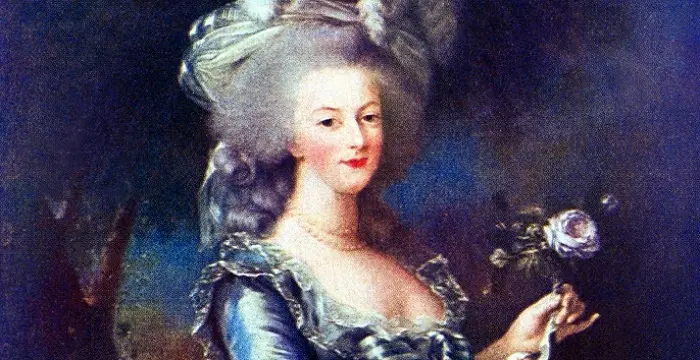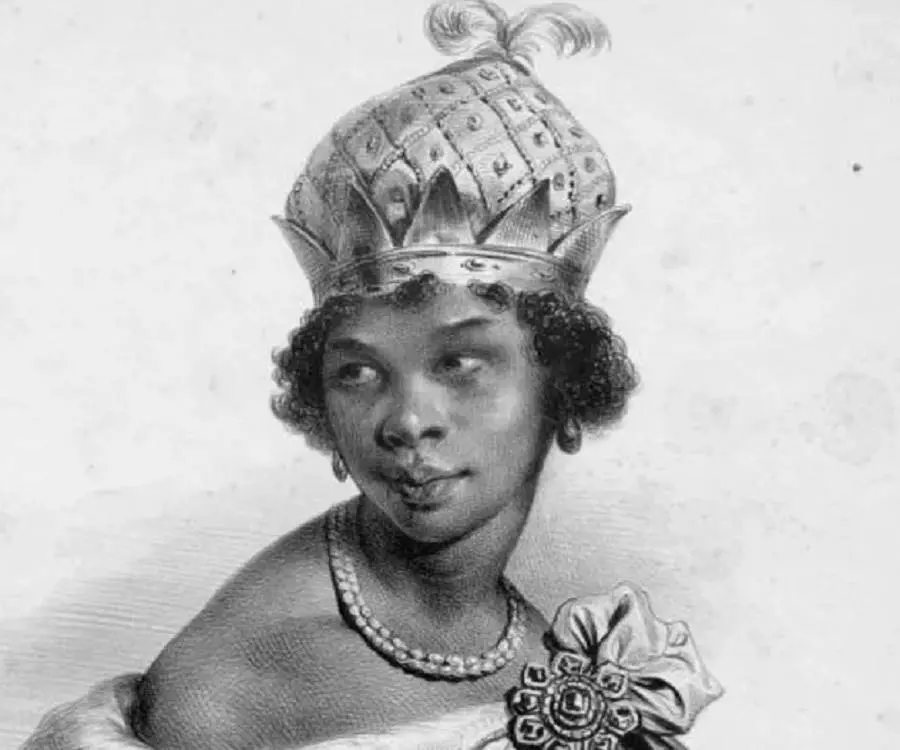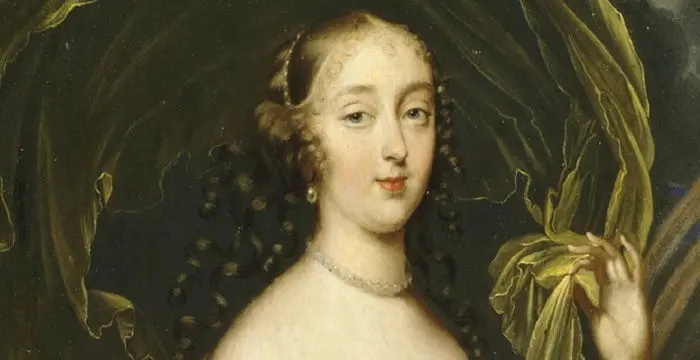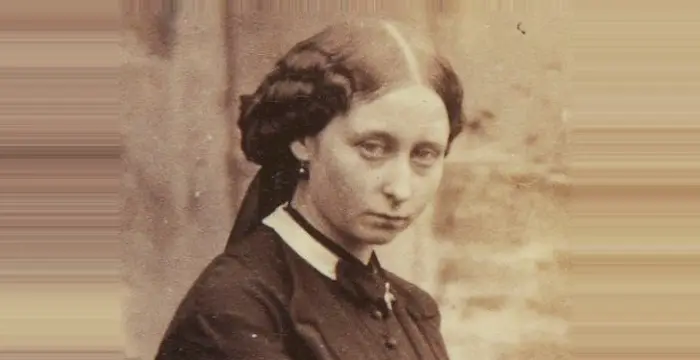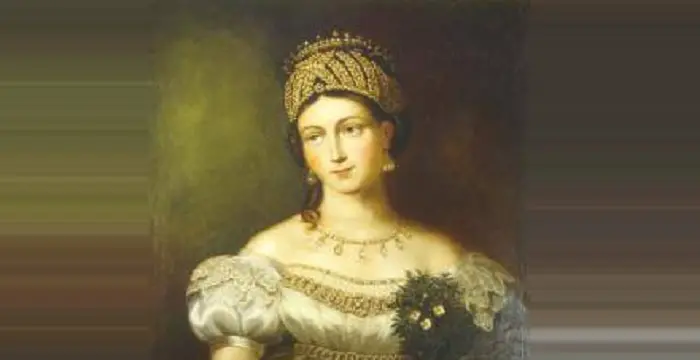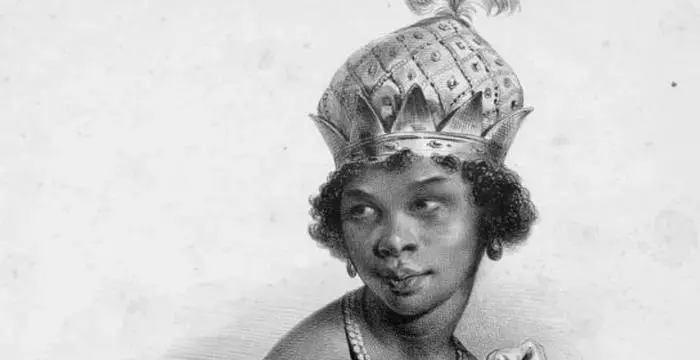
Queen Nzinga - Queens, Life Achievements and Facts
Queen Nzinga's Personal Details
Queen Anna Nzinga was an influential and astute 17th-century queen who ruled the Ndongo and Matamba Kingdoms of the Mbundu people in Angola
| Information | Detail |
|---|---|
| Birthday | 1583 |
| Died on | December 17, 1663 |
| Nationality | Angolan |
| Famous | Historical Personalities, Empresses & Queens, 17th Century Queen of Angola, Empresses, Queens, Women Historical Personalities |
| Spouses | Kifunji Mbande, Mukumbu Mbande |
| Siblings | Ngola Mbandi |
| Known as | Njinga Mbande or Ana de Sousa Nzinga Mbande |
| Childrens | Njinga Mona |
| Birth Place | Kingdom of Matamba |
| Gender | Female |
| Father | Guenguela Cakombe, Ngola Kia Samba |
| Born in | Kingdom of Matamba |
| Famous as | 17th Century Queen of Angola |
| Died at Age | 80 |
// Famous Empresses
Jetsun Pema
Jetsun Pema is the Queen consort of Bhutan. Check out this biography to know about her childhood, family life, achievements and fun facts about her life.
Princess Alice of Battenberg
Princess Andrew of Greece and Denmark, also known as Princess Victoria Alice Elizabeth Julia Marie of Battenberg, was the mother of Prince Philip, Duke of Edinburgh and mother-in-law of Queen Elizabeth II. This biography profiles her childhood, famil
Marie Antoinette
Marie Antoinette was the Queen of France and Navarre from 1774 to 1792. who played a major role in provoking the French Revolution. This biography of Marie Antoinette provides detailed information about her childhood and life
Queen Nzinga's photo
Who is Queen Nzinga?
Queen Anna Nzinga was an influential and astute 17th-century queen who ruled the Ndongo and Matamba Kingdoms of the Mbundu people in Angola. She played an instrumental role in freedom her kingdoms fighting against the Portuguese and their increasing slave trade in Central Africa. She was sister of the king, Ngola (King) Mbande, who had sent her as his representative in negotiating peace with the Portuguese. She illustrated her ability and tact to stitch a treaty on equal terms. She converted to Catholicism and adopted the name Dona Anna de Sousa possibly to strengthen the treaty with the Portuguese. Portugal, however, did not honour the terms of the treaty, which prompted her brother to commit suicide. Following this, she became the regent of his young son, Kaza. It is alleged that she killed Kaza for not being prudent. She then assumed power and formed alliances with former rival states, and also the Dutch to initiate a thirty-year war against the Portuguese.
Childhood & Early Life
She was born sometime around 1583 to Ngola Kiluanji Kia Samba and Guenguela Cakombe in the Portuguese settlement of Angola. Her father was the ruler of the Ndongo and Matamba kingdoms. She had two sisters, Kifunji and Mukambu, while her brother, Mbandi, was her father’s illegitimate son.
She was one of her father’s favourite children. Her father gave administrative exposure to her and also took her to war.
Sometime during the 1610s when her father was dethroned, Mbandi assumed power while she was compelled to leave the kingdom as she posed a challenge to the throne.
Initial Involvement with the Portuguese
On January 25, 1576, with the consent of the then ruler (ngola) of Ndongo, Ndambi, Portuguese explorer Paulo Dias de Novais founded Luanda as ‘São Paulo da Assumpção de Loanda,’ and settled hundred families and around four hundred soldiers.
Decades later, Nzinga’s brother and heir of Ndambi, Mbandi, ruler of Matamba, revolted against the Portuguese around 1618. Forces of governor Luís Mendes de Vasconcelos, in association with the Imbangalas, attacked the Ndongo capital and defeated Mbandi, killing several Ndongo dynasty nobles.
Meanwhile in 1608, a Portuguese official Bento Cardoso set up a slavery tribute. The Portuguese expected to get slaves from the conquered African kingdoms as a tribute.
Nzinga's Return to the Kingdom
In 1617, Nzinga was called back to the kingdom by Mbandi, who wanted her to meet the Portuguese to secure Ndongo’s freedom.
In 1622, as directed by Mbandi, Nzinga represented the king in a meeting with the Portuguese governor of Luanda, João Correia de Sousa, and offered the latter a peace treaty. Nzinga astonished the delegates with her political and diplomatic acumen, tact, and self-assurance so much so that the governor had to agree to her terms leading to a treaty of equal terms.
According to legends, during the negotiations, the Portuguese governor arranged a floor mat for her to sit instead of a chair, while he himself sat on a chair. As per the Mbundu custom, this was derogatory as it was reserved for the subordinates. As such disgraceful gesture was unacceptable to Nzinga, she ordered a servant to lie down on the ground on hands and knees and then sat on back of the servant to proceed with the negotiations.
In 1622, she converted to Catholicism and adopted the name Dona Anna de Sousa in honour of the wife of the governor, who also became her godmother. She presumably took the step to bolster the peace treaty with the Portuguese.
Assuming Power
The peace treaty was, however, never honoured by the Portuguese who continued with their raids acquiring slaves and valuable items. Unable to control this diplomatic impasse and presuming that he would never regain what was lost in the war, Mbandi committed suicide in 1624. According to many, Nzinga got her brother poisoned. This theory was also supported by the Portuguese, who wanted to restrain her from succeeding her brother.
She became the regent of her brother’s son, Kaza. It is alleged that Kaza too was killed by her for his impudence.
A section of eligible electors of the court of Ngola elected her as queen. Her rivals, however, refused to consider her a legitimate ruler of Ndongo and sided with the Portuguese to dethrone her. Hari, a Ndongo, later christened Felipe I, who became a vassal of the Portuguese, joined hands with members in the Kasanje Kingdom, and also the Ndongo nobles and ousted her from Luanda following which she escaped to Milemba aCangola.
She had to retreat with her forces to the east after facing a defeat in 1625. Her sister Kifunji was enthroned as a puppet ruler by the Portuguese, but Kifunji remained loyal to Nzinga and spied for the latter for several years.
In 1629, Nzinga was successful in regrouping and bolstering her forces during her stay in the Matamba territory. She also gave sanctuary to runaway slaves. Moving on, she seized power in Matamba during the 1630s following the demise of its female chief.
Alliance with the Dutch
Luanda was seized by the Dutch in 1641, in association with the Kingdom of Kongo following which Nzinga allied with the Dutch to fight the Portuguese. Expecting to regain lost lands with the aid of the Dutch, she shifted her capital to Kavanga.
The Portuguese army faced defeat from Nzinga in 1644 at Ngoleme.
In 1646, the Portuguese defeated her at Kavanga, and her other sister was captured with her archives. This not only disclosed her association with Kongo, but also the fact that Kifunji was spying for her and had passed secret plans of the Portuguese. While some sources mention that Kifunji was drowned in the Kwanza River by the Portuguese, others claim that she fled to modern-day Namibia.
In 1647, Nzinga defeated a Portuguese army at the ‘Battle of Kombi’ with the aid of the reinforcements sent by the Dutch. This victory led her to lay siege to Muxima, Masangano and Ambaca. However, these sieges remained unsuccessful mainly due to lack of sufficient artillery. She was compelled to give up the siege and return to her Matamba headquarters after the forces of Salvador de Sá e Benevides arrived the following year.
Last Years
In 1656, she was re-accepted by the church. The following year she converted to Catholicism again and promoted churches in her kingdom with the Capuchins. The Portuguese also requested her in 1657 to form a new peace treaty. Worried about her eligible successor, Nzinga inserted a point in the treaty that made Portugal bound to help her family in retaining power.
With the end of wars with Portugal, Nzinga now made efforts in re-developing her nation that faced severe damages due to years of clashes and over-farming. She also tried to resettle former slaves.
Many unsuccessful attempts, particularly from Kasanje, were made to remove her from the throne. On December 17, 1663, at age 80, Nzinga died peacefully in Matamba. A civil war began after her death; the royal line was carried on by Francisco Guterres Ngola Kanini.
Her demise also increased the Portuguese aggression in the interior of South West Africa. By 1671, Ndongo was merged in the Portuguese Angola.
Legacy
Nzinga is still revered in Angola as a woman with political and diplomatic insight and wisdom, who possessed brilliant military tactics and opposed oppression with all her might.
In 2002, the then President of Angola, José Eduardo dos Santos, dedicated her statue on a square in Kinaxixi to celebrate the 27th anniversary of independence.
A major Luanda street is also named after her. Many Angolan women marry near the statue, particularly on Thursdays and Fridays.
A series of coins were issued in honour of Nzinga by the National Reserve Bank of Angola (BNA).
The 2013 Angolan film, ‘Nzinga, Queen of Angola’ was based on her life.
Trivia
Marquis de Sade taking reference from ‘History of Zangua, Queen of Angola’ (1687) written by missionary Giovanni Cavazzi da Montecuccolo, mentions in his 1795 book ‘Philosophy in the Boudoir’ that the queen had an all-male harem. These men, known as chibados, put on women clothing, and were put to death after a single night of lovemaking with her.
// Famous Queens
Jetsun Pema
Jetsun Pema is the Queen consort of Bhutan. Check out this biography to know about her childhood, family life, achievements and fun facts about her life.
Princess Alice of Battenberg
Princess Andrew of Greece and Denmark, also known as Princess Victoria Alice Elizabeth Julia Marie of Battenberg, was the mother of Prince Philip, Duke of Edinburgh and mother-in-law of Queen Elizabeth II. This biography profiles her childhood, famil
Marie Antoinette
Marie Antoinette was the Queen of France and Navarre from 1774 to 1792. who played a major role in provoking the French Revolution. This biography of Marie Antoinette provides detailed information about her childhood and life
Queen Nzinga biography timelines
- // 25th Jan 1576On January 25, 1576, with the consent of the then ruler (ngola) of Ndongo, Ndambi, Portuguese explorer Paulo Dias de Novais founded Luanda as ‘São Paulo da Assumpção de Loanda,’ and settled hundred families and around four hundred soldiers.
- // 1583She was born sometime around 1583 to Ngola Kiluanji Kia Samba and Guenguela Cakombe in the Portuguese settlement of Angola. Her father was the ruler of the Ndongo and Matamba kingdoms. She had two sisters, Kifunji and Mukambu, while her brother, Mbandi, was her father’s illegitimate son.
- // 1608Meanwhile in 1608, a Portuguese official Bento Cardoso set up a slavery tribute. The Portuguese expected to get slaves from the conquered African kingdoms as a tribute.
- // 1617In 1617, Nzinga was called back to the kingdom by Mbandi, who wanted her to meet the Portuguese to secure Ndongo’s freedom.
- // 1618Decades later, Nzinga’s brother and heir of Ndambi, Mbandi, ruler of Matamba, revolted against the Portuguese around 1618. Forces of governor Luís Mendes de Vasconcelos, in association with the Imbangalas, attacked the Ndongo capital and defeated Mbandi, killing several Ndongo dynasty nobles.
- // 1622In 1622, as directed by Mbandi, Nzinga represented the king in a meeting with the Portuguese governor of Luanda, João Correia de Sousa, and offered the latter a peace treaty. Nzinga astonished the delegates with her political and diplomatic acumen, tact, and self-assurance so much so that the governor had to agree to her terms leading to a treaty of equal terms.
- // 1622In 1622, she converted to Catholicism and adopted the name Dona Anna de Sousa in honour of the wife of the governor, who also became her godmother. She presumably took the step to bolster the peace treaty with the Portuguese.
- // 1624The peace treaty was, however, never honoured by the Portuguese who continued with their raids acquiring slaves and valuable items. Unable to control this diplomatic impasse and presuming that he would never regain what was lost in the war, Mbandi committed suicide in 1624. According to many, Nzinga got her brother poisoned. This theory was also supported by the Portuguese, who wanted to restrain her from succeeding her brother.
- // 1625She had to retreat with her forces to the east after facing a defeat in 1625. Her sister Kifunji was enthroned as a puppet ruler by the Portuguese, but Kifunji remained loyal to Nzinga and spied for the latter for several years.
- // 1629In 1629, Nzinga was successful in regrouping and bolstering her forces during her stay in the Matamba territory. She also gave sanctuary to runaway slaves. Moving on, she seized power in Matamba during the 1630s following the demise of its female chief.
- // 1641Luanda was seized by the Dutch in 1641, in association with the Kingdom of Kongo following which Nzinga allied with the Dutch to fight the Portuguese. Expecting to regain lost lands with the aid of the Dutch, she shifted her capital to Kavanga.
- // 1644The Portuguese army faced defeat from Nzinga in 1644 at Ngoleme.
- // 1646In 1646, the Portuguese defeated her at Kavanga, and her other sister was captured with her archives. This not only disclosed her association with Kongo, but also the fact that Kifunji was spying for her and had passed secret plans of the Portuguese. While some sources mention that Kifunji was drowned in the Kwanza River by the Portuguese, others claim that she fled to modern-day Namibia.
- // 1647In 1647, Nzinga defeated a Portuguese army at the ‘Battle of Kombi’ with the aid of the reinforcements sent by the Dutch. This victory led her to lay siege to Muxima, Masangano and Ambaca. However, these sieges remained unsuccessful mainly due to lack of sufficient artillery. She was compelled to give up the siege and return to her Matamba headquarters after the forces of Salvador de Sá e Benevides arrived the following year.
- // 1656 To 1657In 1656, she was re-accepted by the church. The following year she converted to Catholicism again and promoted churches in her kingdom with the Capuchins. The Portuguese also requested her in 1657 to form a new peace treaty. Worried about her eligible successor, Nzinga inserted a point in the treaty that made Portugal bound to help her family in retaining power.
- // 17th Dec 1663Many unsuccessful attempts, particularly from Kasanje, were made to remove her from the throne. On December 17, 1663, at age 80, Nzinga died peacefully in Matamba. A civil war began after her death; the royal line was carried on by Francisco Guterres Ngola Kanini.
- // 1671Her demise also increased the Portuguese aggression in the interior of South West Africa. By 1671, Ndongo was merged in the Portuguese Angola.
- // 1687 To 1795Marquis de Sade taking reference from ‘History of Zangua, Queen of Angola’ (1687) written by missionary Giovanni Cavazzi da Montecuccolo, mentions in his 1795 book ‘Philosophy in the Boudoir’ that the queen had an all-male harem. These men, known as chibados, put on women clothing, and were put to death after a single night of lovemaking with her.
- // 2002In 2002, the then President of Angola, José Eduardo dos Santos, dedicated her statue on a square in Kinaxixi to celebrate the 27th anniversary of independence.
- // 2013The 2013 Angolan film, ‘Nzinga, Queen of Angola’ was based on her life.
// Famous Women Historical Personalities
Jetsun Pema
Jetsun Pema is the Queen consort of Bhutan. Check out this biography to know about her childhood, family life, achievements and fun facts about her life.
Lady Godiva
Lady Godiva was an Anglo-Saxon gentlewoman, known for her legendary naked ride through the streets of Coventry. This biography profiles her childhood, life, achievements and timeline
Madame de Montespan
Françoise-Athénaïs de Rochechouart de Mortemart known as Madame de Montespan was a famous ‘maîtresse en titre’ of the King of France Louis XIV. This biography profiles her childhood, life and timeline.
Princess Alice of the United Kingdom
Alice Maud Mary of the Royal House of Saxe-Coburg and Gotha was a Princess of the United Kingdom. Check out this biography to know about her childhood, family and life history.
Princess Victoria of Saxe-Coburg-Saalfeld
Princess Victoria of Saxe-Coburg Saalfed was a German Princess. Check out this biography to know about her childhood, family life, achievements and fun facts about her life.
Mary Boleyn
Mary Boleyn was a mistress of the English King Henry VIII. Check out this biography to know about her childhood, family life, and fun facts about her life.
Queen Nzinga's FAQ
When was Queen Nzinga died?
Queen Nzinga was died at 1663-12-17
Which age was Queen Nzinga died?
Queen Nzinga was died at age 80
Where is Queen Nzinga's birth place?
Queen Nzinga was born in Kingdom of Matamba
What is Queen Nzinga nationalities?
Queen Nzinga's nationalities is Angolan
Who is Queen Nzinga spouses?
Queen Nzinga's spouses is Kifunji Mbande, Mukumbu Mbande
Who is Queen Nzinga siblings?
Queen Nzinga's siblings is Ngola Mbandi
Who is Queen Nzinga childrens?
Queen Nzinga's childrens is Njinga Mona
Who is Queen Nzinga's father?
Queen Nzinga's father is Guenguela Cakombe, Ngola Kia Samba
How famous is Queen Nzinga?
Queen Nzinga is famouse as 17th Century Queen of Angola


